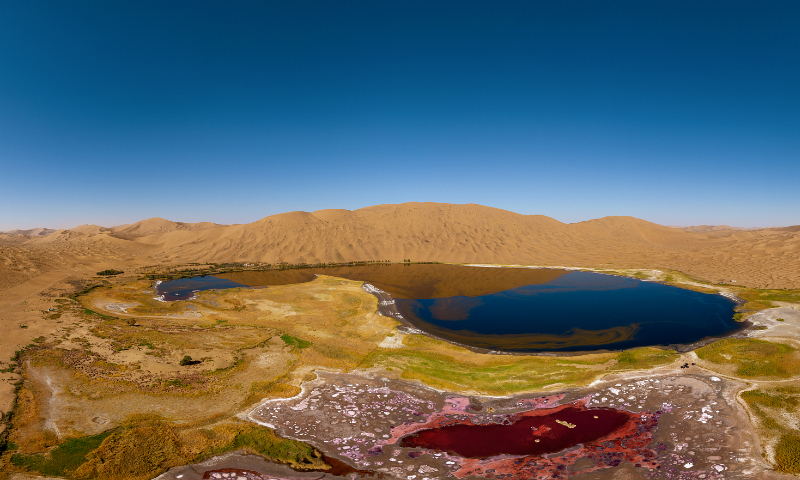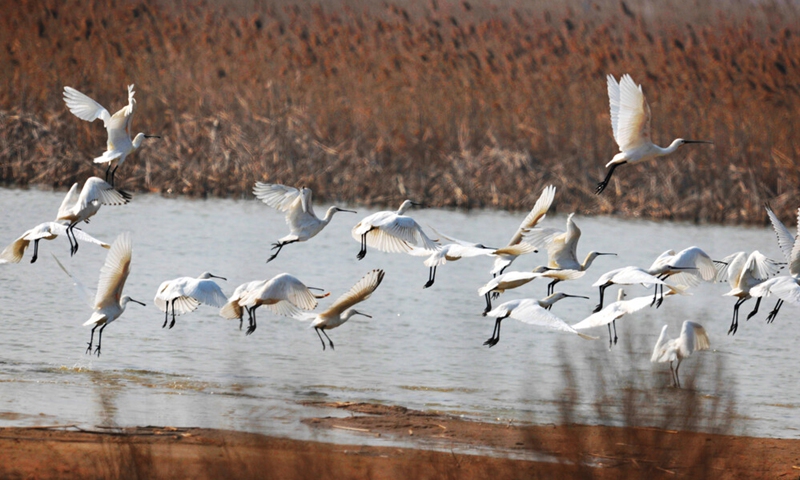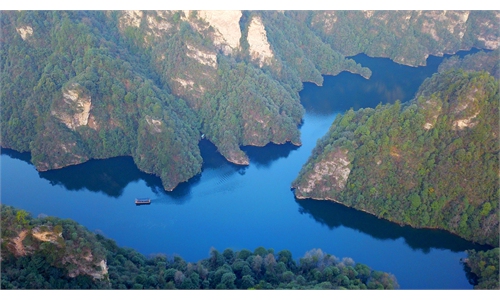
The Badain Jaran Desert in North China's Inner Mongolia Autonomous Region Photo: VCG
The Badain Jaran Desert in North China's Inner Mongolia Autonomous Region and Migratory Bird Sanctuaries along the coast of the Yellow Sea-Bohai Gulf (Phase II) were included in UNESCO's World Heritage List on Friday during the ongoing 46th Session of the World Heritage Committee held in New Delhi, India, according to the National Forestry and Grassland Administration on Friday.
Currently, China boasts 15 Natural World Heritage sites and four mixed (cultural and natural) heritage sites, maintaining top position globally in a nation's total number of Natural World Heritage sites.
The "Badain Jaran Desert - Towers of Sand and Lakes" is the first desert in China nominated for the World Heritage List. The desert, located in the northern part of Inner Mongolia Autonomous Region in North China, covers an area of 44,300 square kilometers and is the third-largest desert in China. Its northwestern part, over 10,000 square kilometers, remains untouched by human presence.
While most deserts are known as forbidden zones due to water scarcity, the Badain Jaran Desert is a wonderland where sand dunes and lakes coexist. The towering sand dunes and diverse desert lakes are the two highlights of this nomination.
The Badain Jaran Desert, featuring its unique, rare and magnificent tall sand dunes, as well as countless colorful inter-dune lakes, is an outstanding example of the ongoing evolution of desert landscapes and landforms in temperate and hyper-arid climates. It is also one of the desert landscapes with rare natural beauty on a global scale, according to the World Heritage Committee.

Migratory birds seen at the sanctuaries Photo: Courtesy of Yancheng Broadcasting Television
Migratory Bird Sanctuaries along the Coast of Yellow Sea-Bohai Gulf of China (Phase I) was inscribed on the World Heritage List in 2019 and is located in Yancheng, East China's Jiangsu Province. The second phase of the project includes multiple conservation areas in Shanghai, Hebei, Shandong, Liaoning and other provinces and cities.
The sanctuaries, located in the world's largest intertidal wetland, serve as a crucial habitat for migratory birds along the East Asia-Australasia flyway. This migration route extends from Siberia and Alaska through East, Southeast and South Asia, all the way to Oceania, crossing 22 countries. It is the most diverse and highest concentration of endangered species among migration routes globally, providing essential breeding, resting and wintering grounds for tens of millions of waterfowl.
The migratory bird sanctuaries in China have unique ecological functions. Their tidal flats are critically important for the conservation of migratory birds worldwide, providing survival support for the vast majority of bird species, including 45 threatened species. As a whole, the sanctuaries make an irreplaceable contribution to the conservation of migratory waterbirds in the East Asia-Australasia Flyway (EAAF). The EAAF is one of the world's most important flyways and one of the regions with the highest concentration of endangered species and the most fragile ecosystems. The successful inclusion of this heritage site marks a milestone for the protection of globally significant human heritage, according to the World Heritage Committee.
In recent years, China has continuously strengthened the protection of Natural World Heritage sites and mixed heritage sites. Relying on the construction of national parks, nature reserves and scenic areas within the natural protection system, China has been steadily establishing and improving protection management systems and achieving effective protection and sustainable use of heritage sites.
China's World Heritage sites, which encompass outstanding values of natural beauty, geological features and biological ecology, have become a model for ecological civilization and the construction of a beautiful China. They increasingly highlight China's firm commitment and exceptional contributions to global biodiversity conservation, sustainable development, and participation in global environmental governance.
Moving forward, China will seize the opportunity to comprehensively advance the construction of a nature protection system centered on national parks. This will further improve the protection and management of natural heritage sites, support the building of a beautiful China, continue to fulfill international conventions, strengthen international cooperation, share China's successful experiences, and promote global ecological civilization and cultural exchanges. In doing so, China will contribute its experience and strength to building a community with a shared future for mankind.



